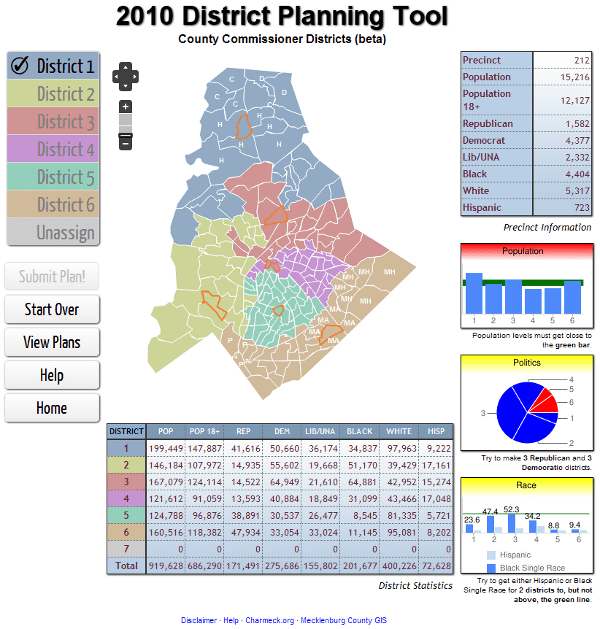Lightweight Redistricting with OpenLayers - Part II.5
I’ve received a number of questions about where this project has gotten to, so I thought a quick update was in order.
 First, the project is a go, and the public will be able to create and submit their own plans. Yay Democracy!
First, the project is a go, and the public will be able to create and submit their own plans. Yay Democracy!
The big thing I’m waiting on right now is the rules. The Board of County Commissioners has appointed an advisory panel to create the rules for redistricting, which the Board will then have to approve. That group started meeting in March and will continue hashing things out for some time.
I use the term rules loosely here. There’s really only one rule, and that relates to total population. Everything else is a weighted value, as in you can submit a plan that doesn’t have 3 likely Republican and 3 likely Democratic districts, but it’s better if you don’t. From a programming perspective that makes things easier, because I don’t have to prevent you from doing a whole lot (I do flash some appropriately annoying warnings though).
The project hasn’t been sitting idle these last three months though. Far from it. The driver (and I mean driver - I don’t think the man sleeps) from the county manager’s office is extremely excited about the project, and we’ve been going back and forth with mods and tweaks and changes nearly continuously. I now know more about Google Charts than anybody has a right to.
Here’s what’s left to do, more or less:
- The rules have to get finalized. And there are two sets of rules now - one for the County Commission, and one for the School Board.
- The data may have to change to reflect those rules (kudos to the Census folks for an Access tutorial so easy I'm going refrain from beating my anti-Microsoft drum).
- When the rules are finalized, I'll create the plan submission bits.
- With a few test plans submitted, I'll create a page for viewing submitted plans.
- We'll need a good video tutorial. Maybe Morgan Freeman for the voice-overs.
- A much needed code cleaning. I've done some of that already, but I still wouldn't eat off the thing.
- Release the project under an open source license.
To wrap up, the project is still alive and kicking, and the code will be forthcoming when it hits the ground.

